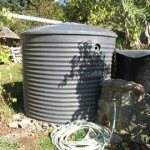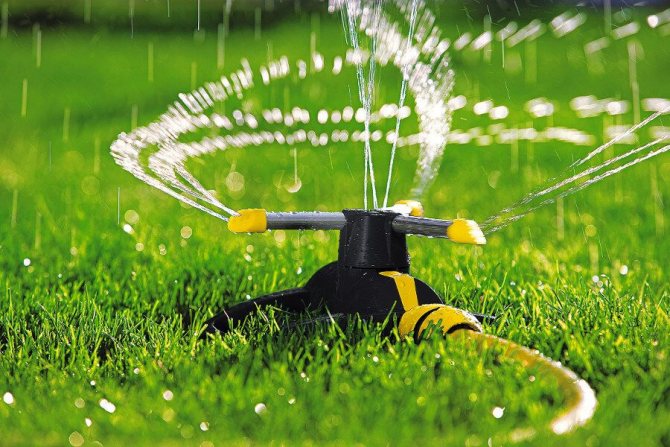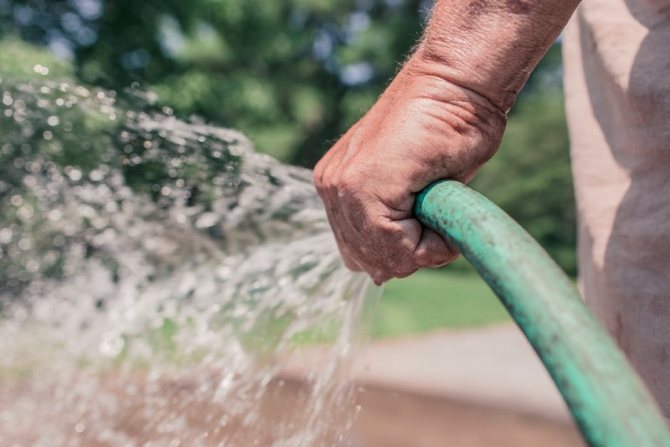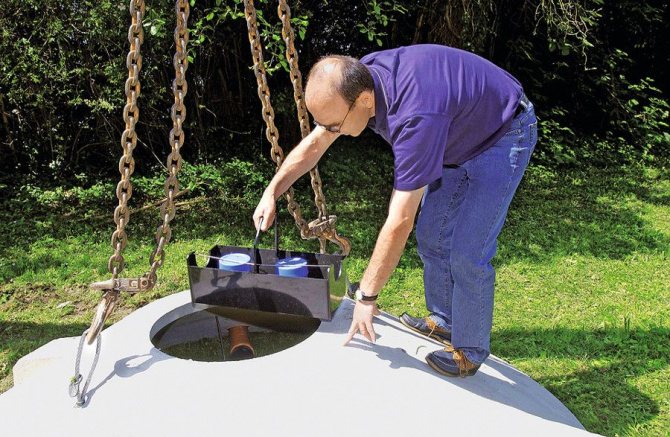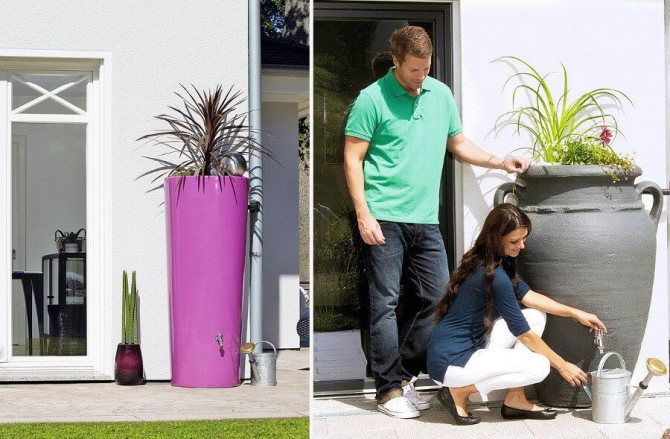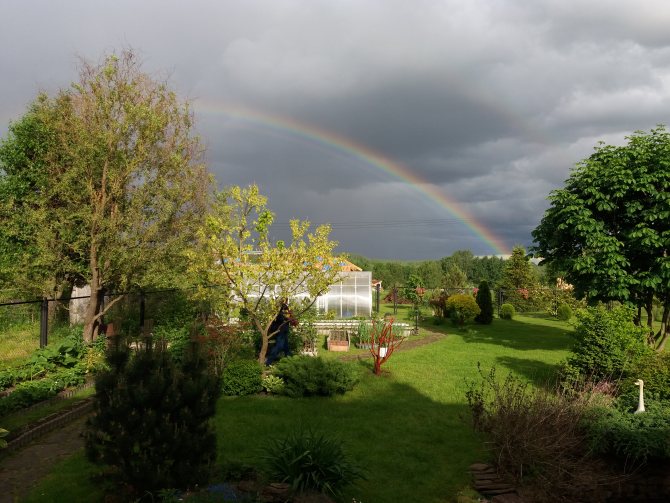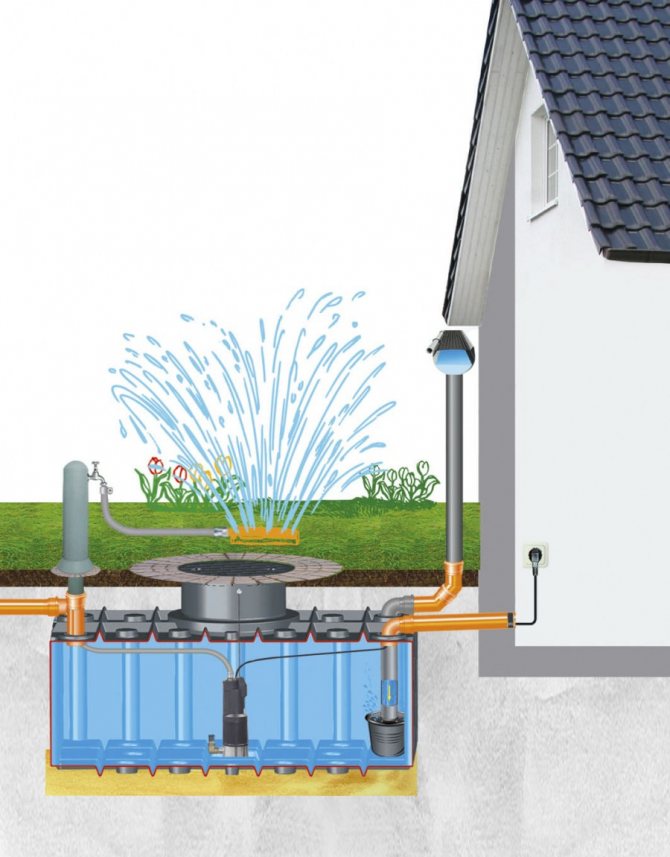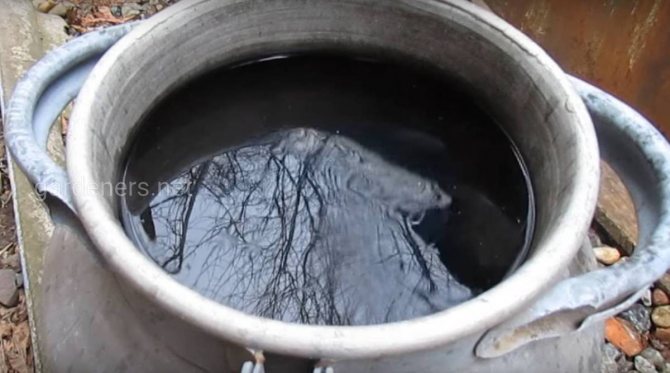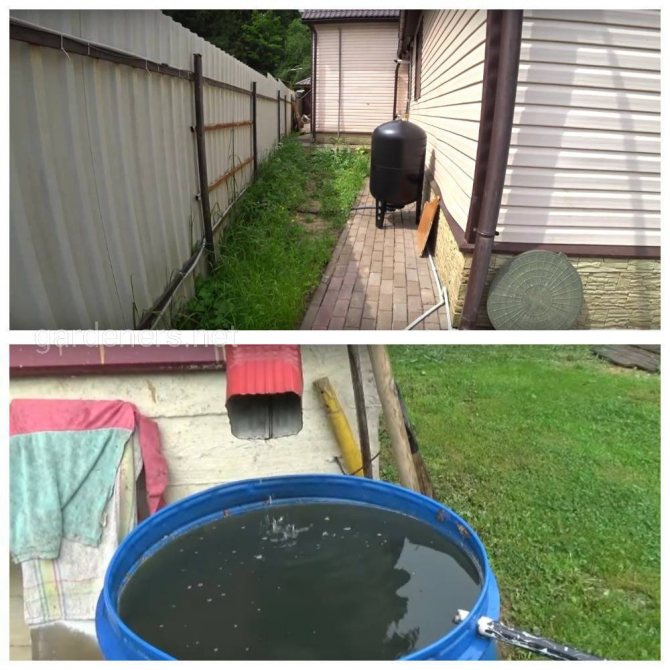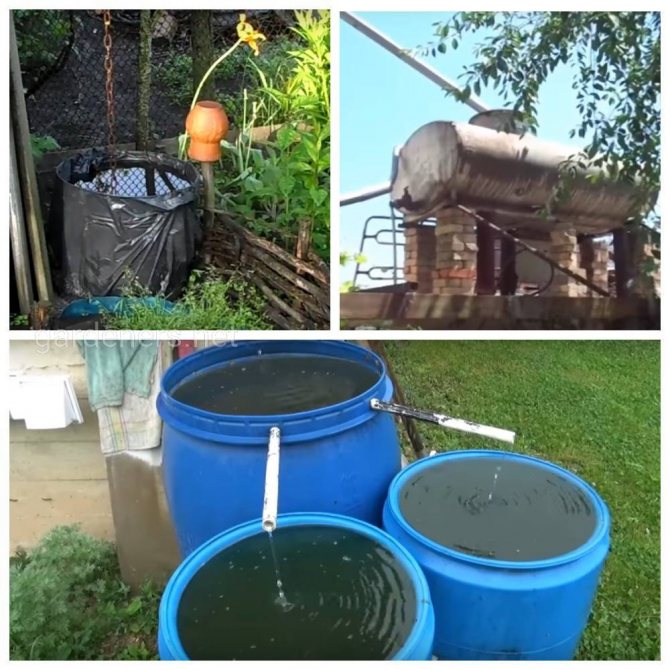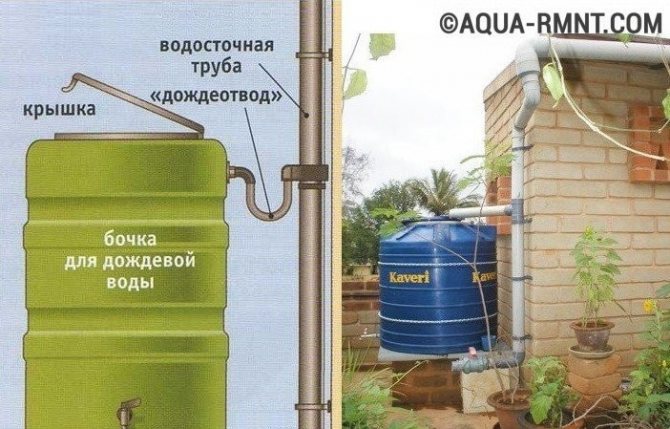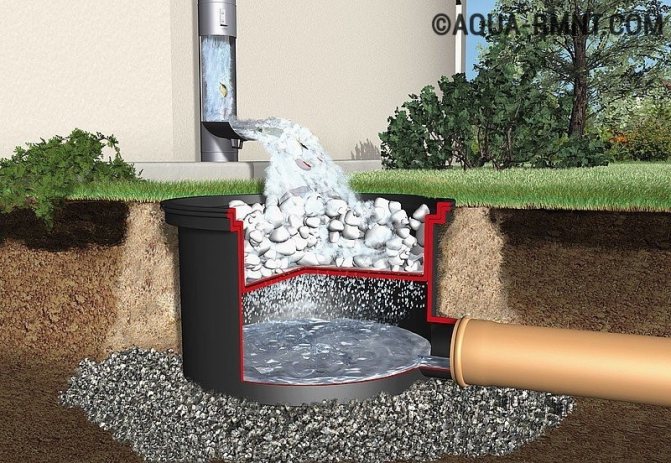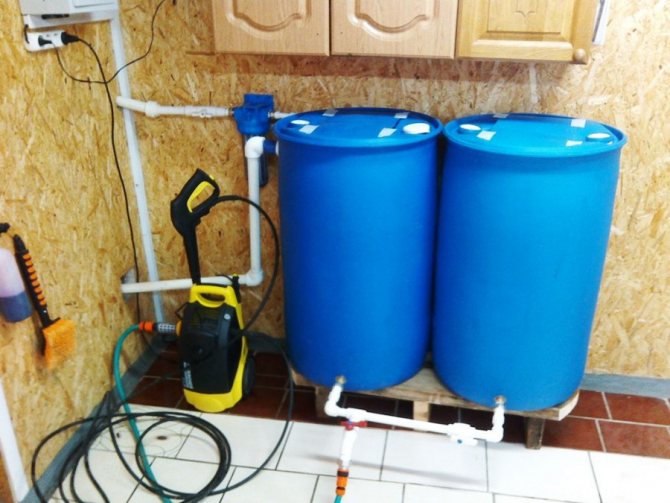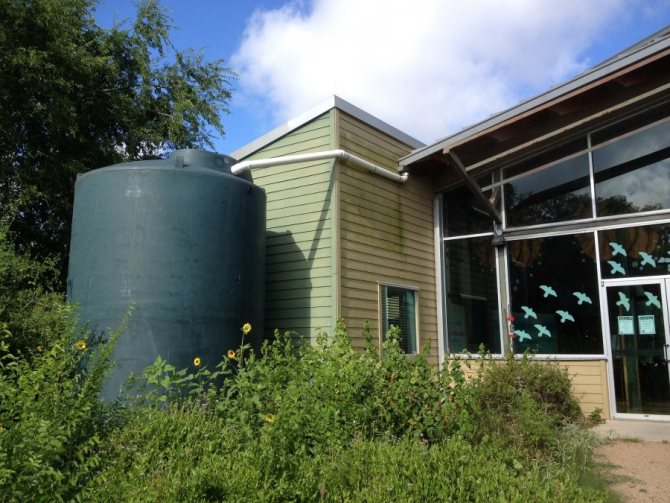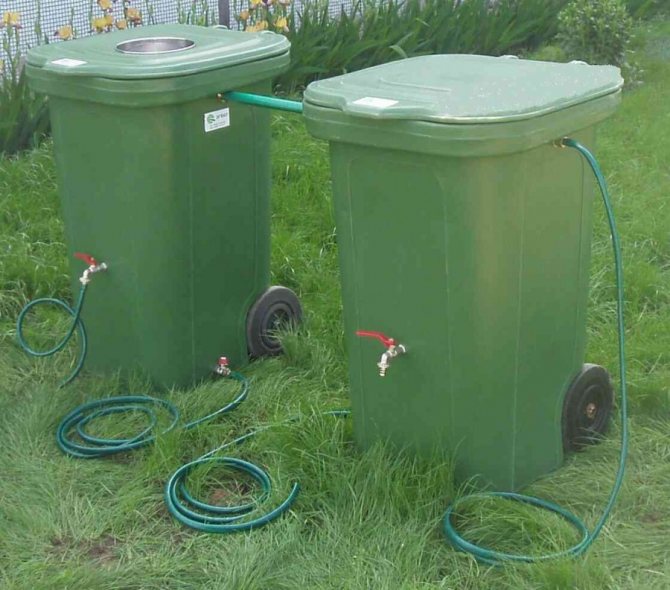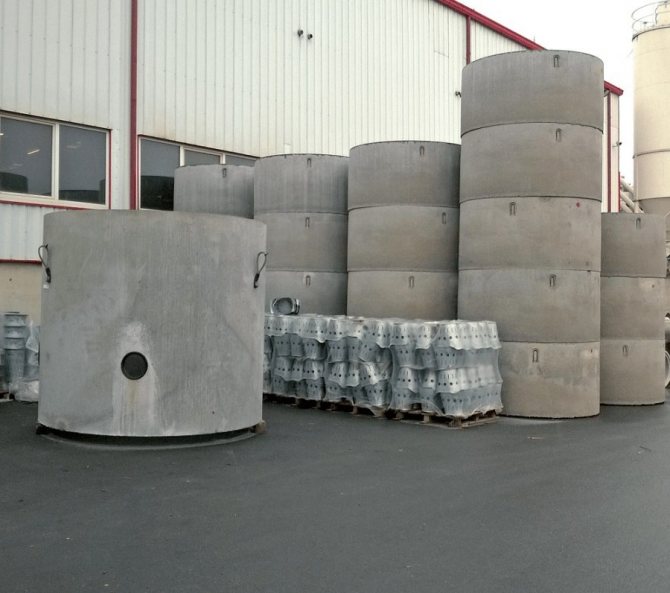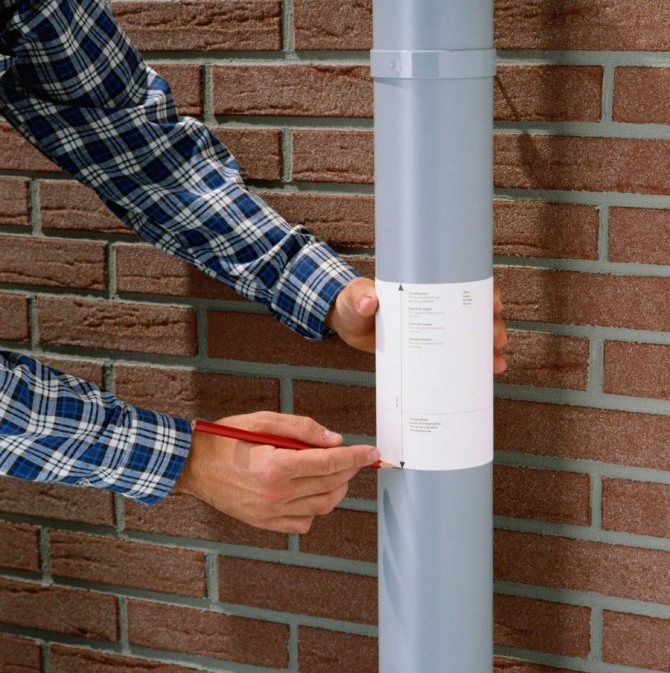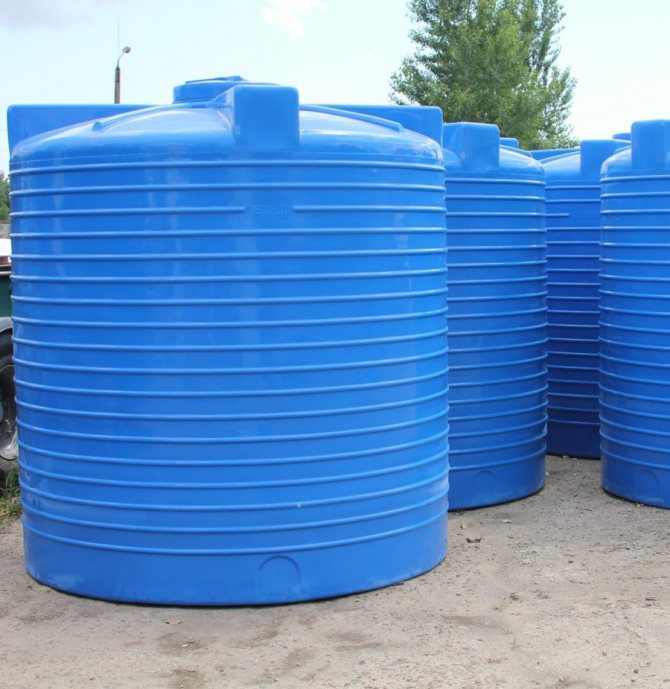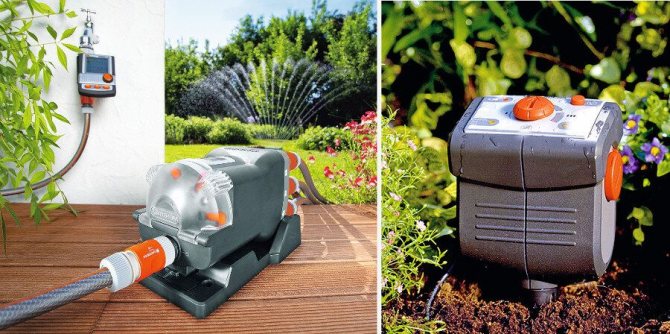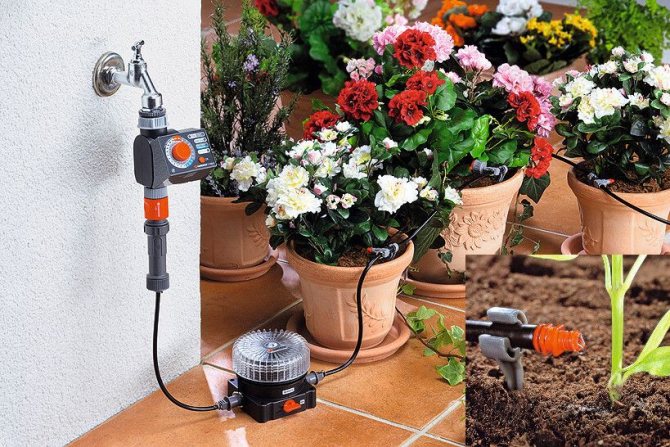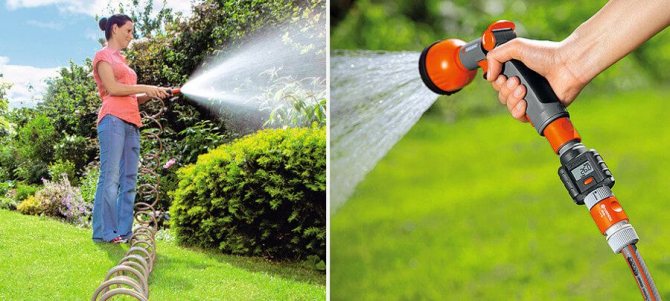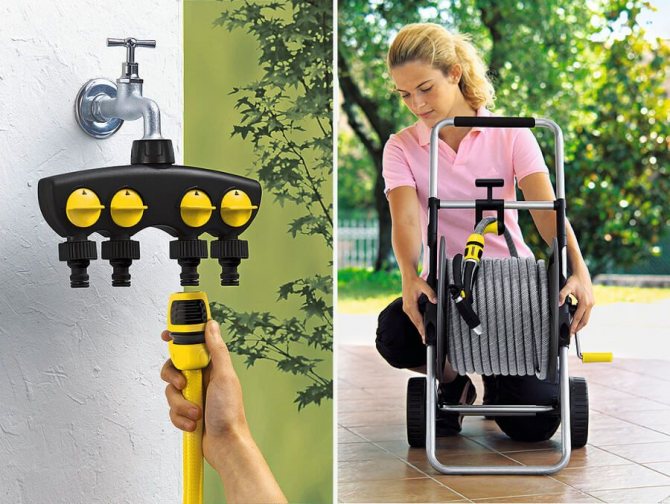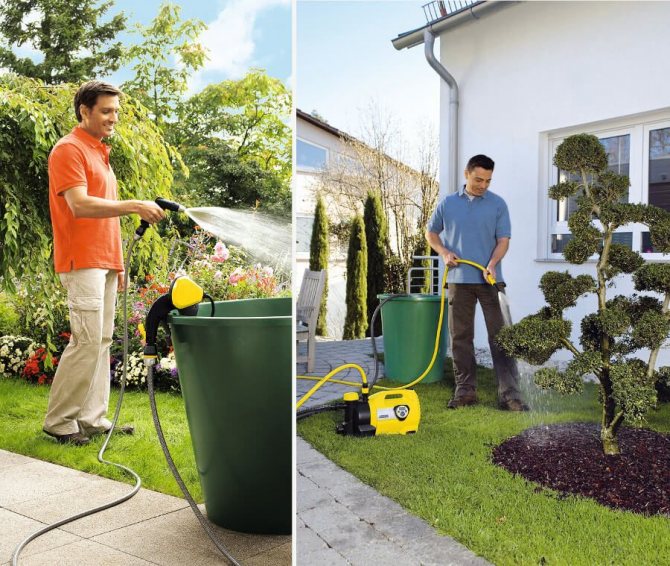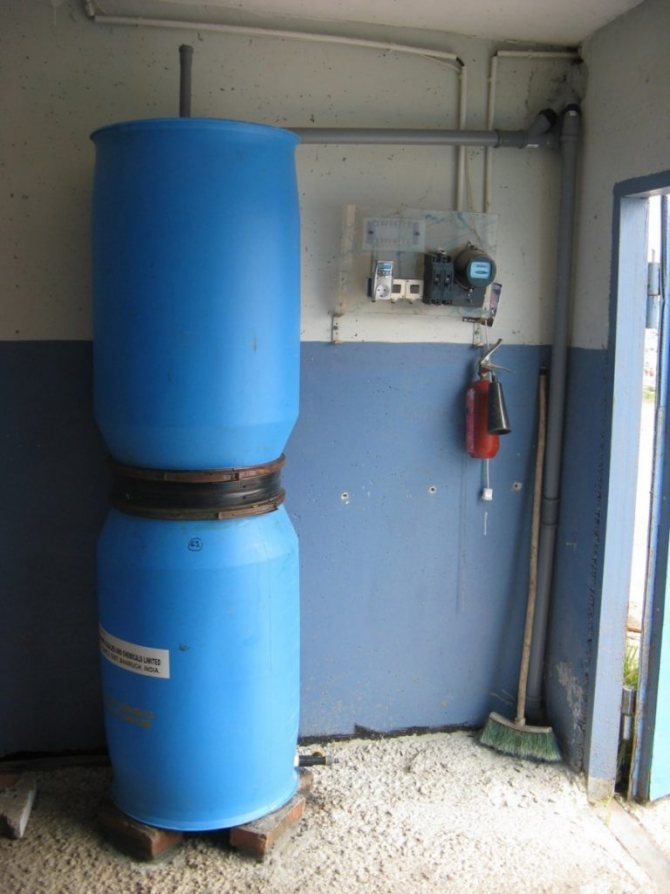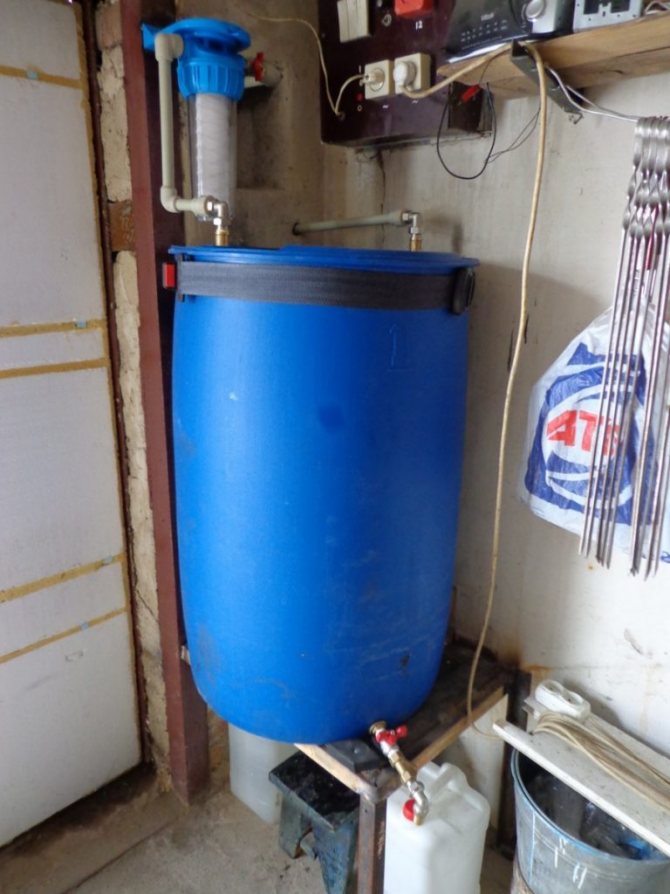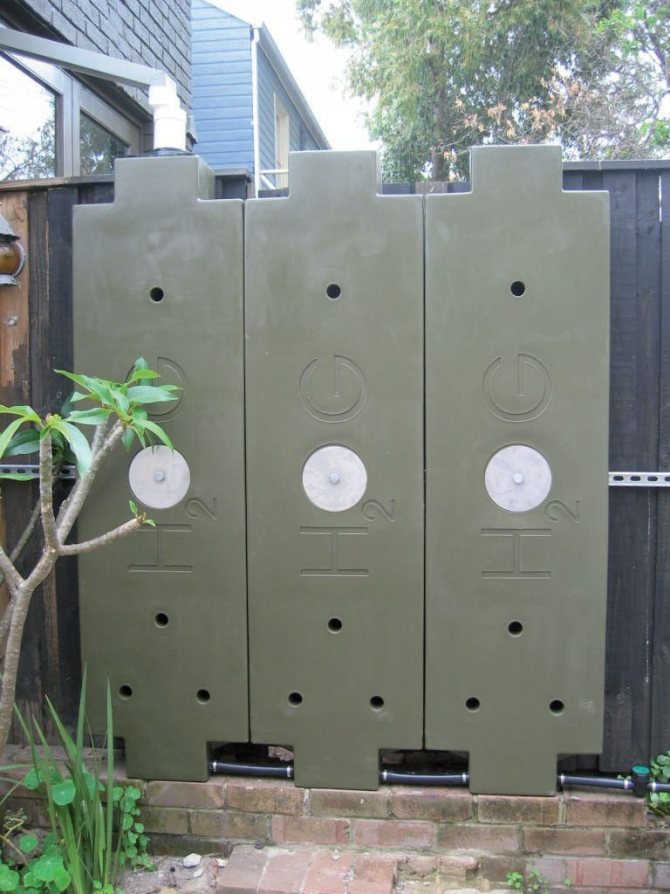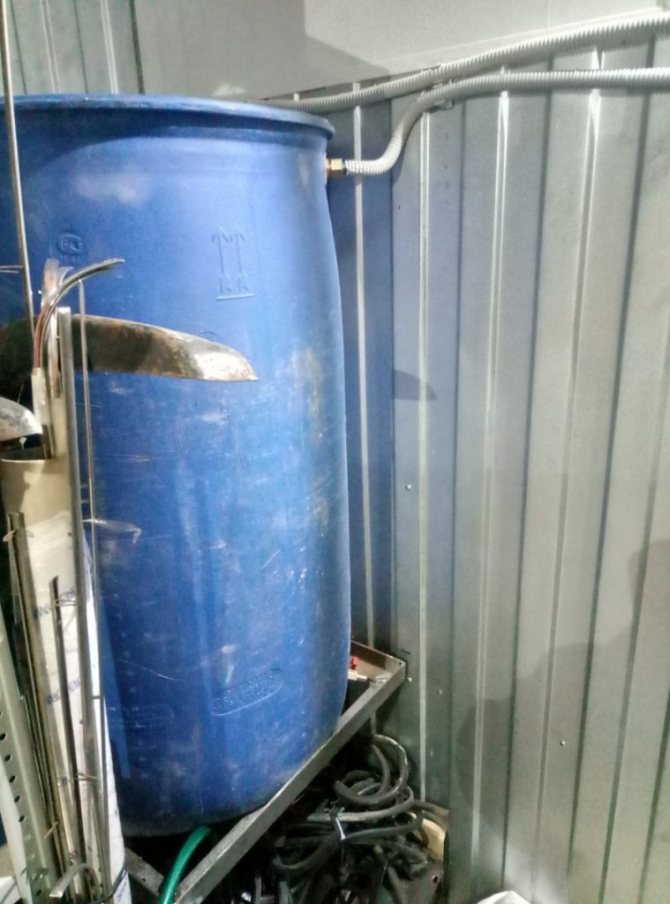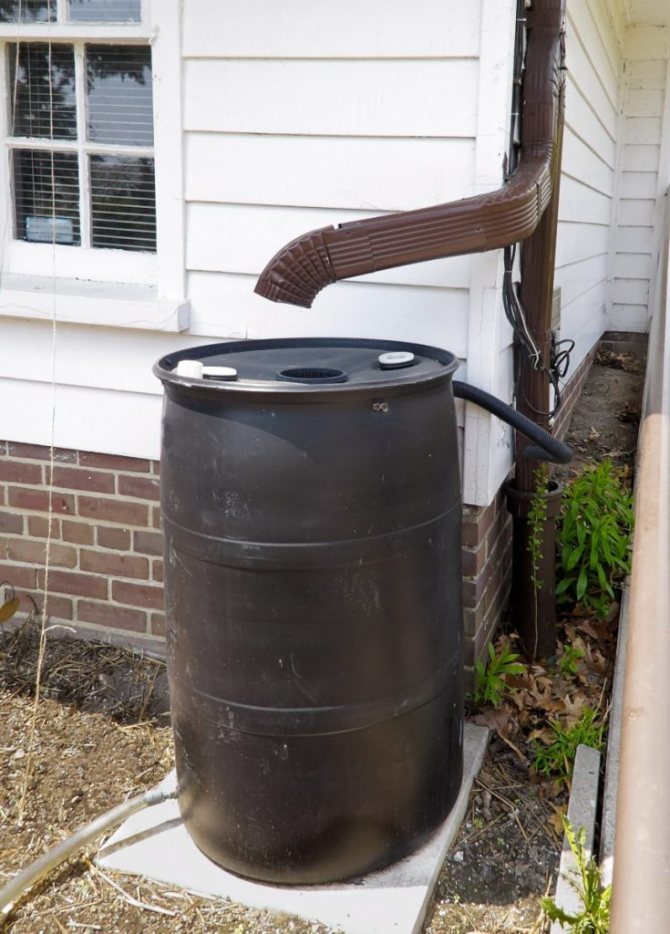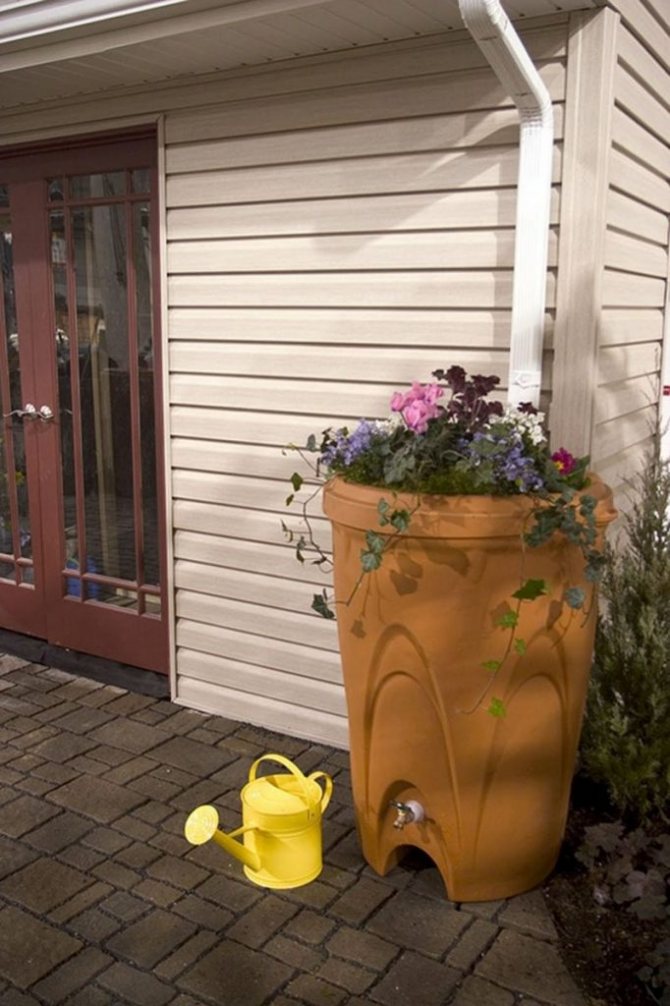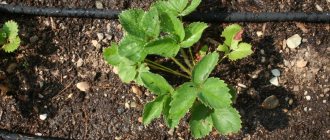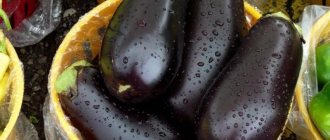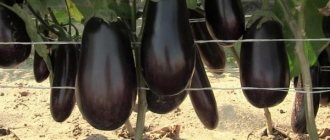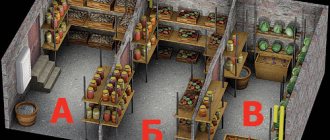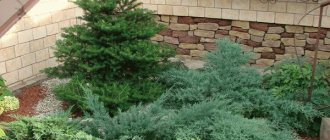Simple and cheap solution to create your own rainwater collection system from the roof
It only takes one weekend to build your own rainwater harvesting system. You can use the water collected from the roof for watering the garden and vegetable garden, washing the car, outdoor shower in the country, washing and other needs. Remember that it is full of bacteria: it is not suitable for drinking or preparing food. This rainwater supply will always be specialized, and collecting water from the roof does not replace a well and plumbing.
Preparation:
Before heading to the hardware store, you need to do some small but important calculations. Therefore, to begin with, we will determine the material from which the roof of your country house is made, the amount of moisture that will flow down the roof, the volume that needs to be collected based on the calculations of daily consumption and annual precipitation.
- Roofs covered with tar, gravel, asbestos or any other toxic coating are not suitable. This coating will leave unwanted chemicals in the collected water. Suitable safety coating: roof tiles, metal, etc.
- Measure the perimeter of the roof, then calculate the area excluding slopes and eaves. The usable area will be at least 80% of the total area. This parameter depends on the roof surface. To calculate the approximate volume of collected fluid per year using this method, we use the following formula:
V = (S * A * k) / 1000 liters, where:
V - volume of collected water S - total roof area in m2 A - annual precipitation in mm k - coefficient of efficiency of water collection, k = 0.8
The size of the rainwater collection tank is selected based on the volume of water consumed daily by all residents of the house. General formula: consumption by one person per day & 規 number of people & 規 number of days = volume required.
Another parameter is the duration of the rainy season: it can be one near Moscow, another in Siberia, and a third in Primorye. Divide the rainy season by months, write down the average monthly rainfall, subtract the amount of water you need per month. As a result, we get the amount of unused liquid that can be carried over to the next month.
And remember: if you collect rainwater from the roof into a circular tank, its volume is calculated using the formula: surface area & 規 tank height.
Purchase of materials
- Rainwater tank: free. (You can use the old one or search around).
- Polypropylene barrel with lid - $ 0.35- $ 1.00 / gallon (Very light, unlike others)
- Metal drum - $ 0.40 - $ 0.60 / gallon (You cannot use such a storage tank to collect and store drinking water if it does not have a special gasket in it).
- Gutters - $ 0.30 per - 30.5 cm; alternatively, the drains can be made by yourself.
- Pipes to and from the water collection tank: approximately $ 10 for 3 meters (The diameter of the pipes depends on the size of the water collection area)
- PVC knees - $ 2 per piece
- Cement - $ 5
- Materials for a flat and stable surface: special backing / mattress - $ 6.
- Fence for the tank around the perimeter -10 dollars.
- Track coverage - $ 20.
- 1 bag of Portland cement -30 dollars.
- The sediment container can be stably installed by tearing a few centimeters into the ground under it. However, this is not suitable for all types of soil.
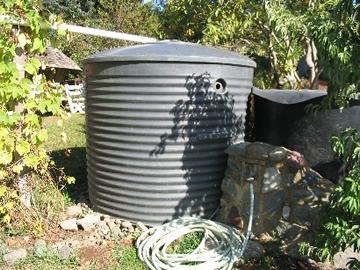
Note: In order to protect the gutters, it is necessary to install leaf filters, filter nets or funnels.
Installation
1. The opening of the tank should be located a few centimeters below the funnel.
2. It is desirable that the tank has an aesthetic appearance and is camouflaged between the trees.
3. The tank must be on a flat, stable surface (pad / mattress). Make a small fence around the tank. Fill the fenced area with a special road surface - it is cheap and compact. Then lay in a small layer of Portland cement. Loosen, check with a level that the surface is even, fill with water. Let dry.
4. When fixing gutters, remember:
- Measure the length of the eaves in order to determine the length of the gutters.
- Downpipes must be fixed at intervals of 10-15 m along the entire length of the main gutter.
- Count the number of gutters - double the number to get the required number of knees. Count the number of turns by 900 and 450 to get the required number of knees of the desired shape.
- Calculate the number of fasteners, flexible ties and plugs required.
- The brackets should be placed on the eaves at intervals of 9m or on each head of the rafter.
- It is recommended to place gutters at a slope of 0.6 - 1.2 cm towards the downpipe every 3 m. To do this, measure the perimeter of the house.
To prevent gutters from clogging, install filters to collect leaves and clean sediment from debris: flat filter nets or funnels. Leaf collecting nets are usually installed at the beginning of the gutters, and filter nets and funnels at the point where the liquid passes into the downpipes.
General rules: 15m2 of collecting roof surface = 7.5cm diameter downpipe for every 15m length of gutter connected to a 10cm diameter PVC pipe through which water enters the tank.
5. For smaller surfaces, a gutter with a diameter of not more than 5 cm for every 12 m of the length of the gutter connected to a PVC pipe with a diameter of 7.5 cm.
6. When joining PVC pipes with cement, twist them a quarter turn back and forth to distribute the bonding evenly. If small balls have formed around the pipe, then you have done everything correctly - the pipes will not leak. Also, do not forget to leave not very large reserves of length when cutting pipes - about 7.5 cm (for connections).
7. Install the tank at the highest point, as the water pressure is 453 g / 2.54 cm2 for every 70 cm of height.
At FORUMHOUSE you can find out what is right for your site: a well or a well. Read an article on our website about the installation of a PVC drainage system.
How to clean rainwater in the country and at home
It is necessary that the collected liquid undergoes primary mechanical filtration from foliage, dirt, branches, moss, and other large impurities. For this, a method with several containers is suitable, which cleans from coarse sediment, as indicated above, or special filtration systems. They will often have to be cleaned of accumulated dirt.
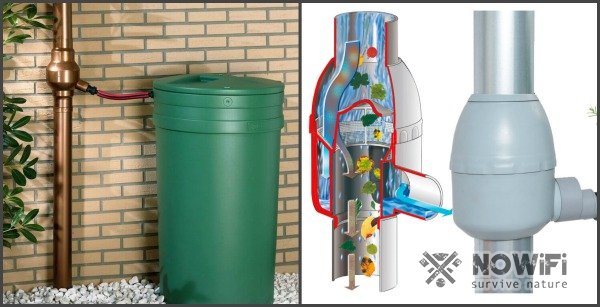

Figure 3. Scheme of the filter in drainpipes
The filter for cleaning is installed either on the ground or on the drainpipes (Figure 3). The choice of the installation site is determined by the roof area and the number of gutters. On a small number of pipes, it is easier to install cleaning filters. With a large quantity, it will be optimal to mount the water purifier on the ground.
If precipitation enters the storage tank, it helps to further purify the rainwater by settling dirt particles to the bottom.
Equally important is the place of installation of the catchment tank.
The plastic tank is installed in the basement or outside the building. Please note that it will not be possible to place a large container in the basement - it will take up too much space. When installing the tank in an open area, place it in an open pit. This will help you meet the requirements for storing rainwater (dark, cool place).
The liquid container should be made of opaque plastic or concrete (Figure 4).
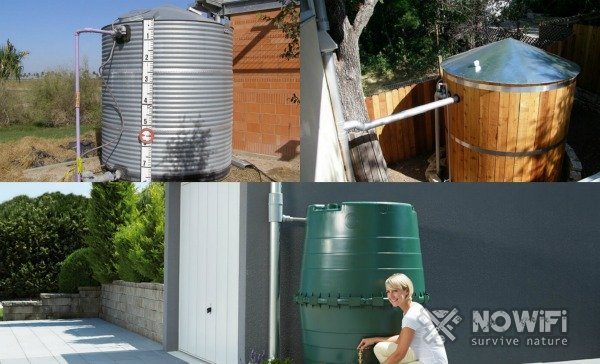

Figure 4. Example of containers for collecting rainwater
Take into account that it is better to provide a pit for the tank even at the stage of building the site. If you are going to install a water treatment system after you build your home, it’s cheaper to install a sediment collection container in your basement.
An important point is the correct intake of treated rainwater from the tank. It is better that it is carried out from above, so as not to disturb the sediment at the bottom. Also, take care of the presence of a special siphon that will drain excess liquid, excluding overflow in the tank.
For different sources, the scheme for collecting and cleaning sediments can vary significantly. A number of parameters can be controlled independently. These include: the presence of impurities, foreign odors, coloration. The rest of the norms for the use of rainwater as technical is better to clarify in the corresponding GOST. Based on this information, you will be able to form a suitable filtration system for the site.
In the first stage, a coarse filtration system helps to purify rainwater, which separates coarse sediment and dirt, preventing clogging of finer filters. The cheapest and most convenient option is a variety of mesh filters. However, you will have to constantly clean them yourself. You can shell out a much larger amount for the purchase of a modern self-cleaning filtration system. It will allow you to do without manual cleaning for several years of constant collection and use of rainwater.
Read more: Heating gutters DIY heating system installation
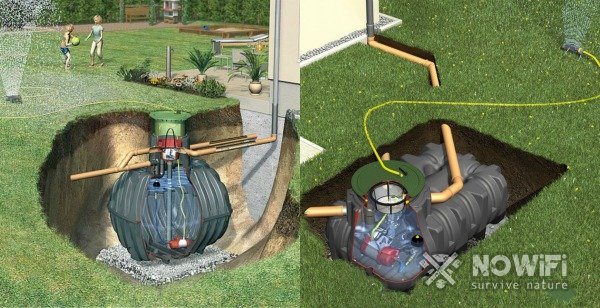

Figure 5. Integrated system of underground storage, purification and supply of rainwater
A convenient and budgetary way to supply liquid from a storage tank is different types of ready-made pumping stations (Figure 5). Simple stations make it possible to automatically supply water from a depth of up to 30 m. However, at greater depths, more powerful pumps will have to be used, which will provide constant pressure.
In addition to primary filters, it is necessary to install thinner ones in order to additionally purify the water and prevent clogging of the water supply elements. The smooth operation of the pumps depends on the filtration characteristics and the quality of cleaning.
If a small amount of industrial water is required (a variable source), you can use a simple filter that is suitable for installation in a summer cottage and meets all environmental requirements.
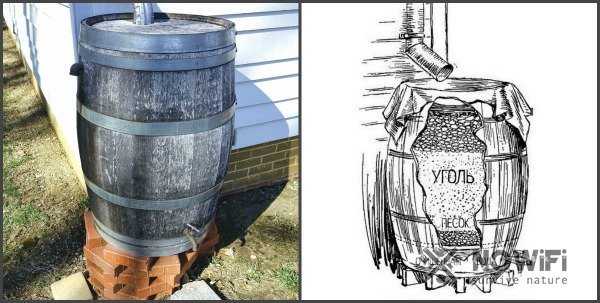

Figure 6. Diagram of a homemade rainwater treatment system
To create a summer cottage filter, you will need a wooden barrel or an opaque plastic container (Figure 6). It is installed low above the ground on bricks or stable stones. A crane is installed in the lower third of the barrel. Slightly above the tap inside the container, a partition with fine perforations is installed, which is covered with a dense cloth (necessarily water-permeable).
Next, you need to make the core according to the principle of natural filtration: lay out pebbles, clean river sand, gravel, medium-sized charcoal in layers. Each layer, except for coal (it should be one and a half to two times more), is made 10-15 cm thick.Pour pebbles on top of the coal layer, cover with another piece of fabric. The fabric will need to be changed periodically to fresh. The filter itself needs to be updated every six months (in spring and autumn).
We remind you that after the rainwater has been purified, it can only be used for technical needs.
Benefits of using rainwater
If a country house is a person's permanent place of residence, then to serve his needs, about 130-160 liters of clean water are needed every day. A large amount of liquid goes to watering flower beds, beds, lawns. It becomes clear why rainwater will never be redundant.
Let's remember summer showers in the country. Water accumulates in a large container raised above the ground. It heats up under the sun and becomes comfortable to use on a hot day. If you slightly modify the primitive water supply system, then you can get water resources not only for the soul, but for the entire country house.
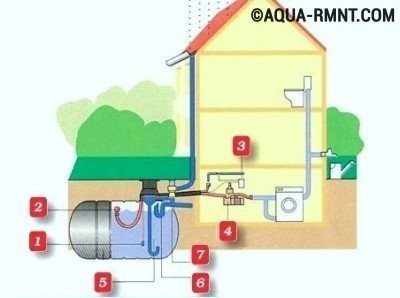

Rainwater collection systems: 1 - water level sensor; 2 - float filter; 3 - control over the water level; 4 - centrifugal pump; 5 - polyethylene container; 6 - siphon; 7 - filter
Is the water collected from the rain good for washing or even for showering? Certainly! In terms of its chemical composition, it is much softer and safer than city tap water. The sufficient amount of oxygen in the composition makes it ideal for watering plants. Only in one case, atmospheric precipitation can be harmful - if there is an industrial enterprise or a large city nearby.
Attention! Water collected after rain should not be used for drinking or cooking. It is suitable only for technical needs - washing, cleaning, watering, washing the car. Or it needs to be passed through a serious purification system.
One of the advantages of rain collection is that it practically does not require investments: you only need to spend money once on installing a container and laying pipes. The only negative is the dependence on the amount of precipitation. In dry summers, there is no need to rely on an additional source.
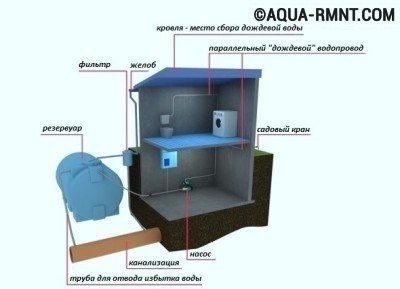

When installing a storage tank, do not forget about insurance against an excess of water. In the upper part of the tank, a drain is made leading to the sewer, through which the excess flows down
Water wisely - irrigation systems
Irrigation system - This is a conditional concept, which is understood as a complex of adaptations. With their help, water from the source is delivered to the plants. We will not dwell on complex hydraulic structures, the use of which within the suburban area is impossible, but let's talk about household options. For a small garden or vegetable garden, both a home-made system and a ready-made kit from a store are suitable.
When creating a watering system with your own hands, you still cannot do without additional purchases. If you can organize a small pressure from the barrel without a pump, then taps, fittings and hoses will still have to be purchased. Also, if you need to ensure autonomy, you will have to spend money on an automation unit with a timer that turns on and off the water supply at the right time.
There are also ready-made kits, which immediately include all the necessary set, some of them are designed for irrigation using gravity pressure from the barrel (while the barrel should be on an elevation), but there are kits designed to connect the pump.
Irrigation systems based on the principle of irrigation can be conditionally divided into types:
Sprinkling - the irrigation method is effective when irrigating the lawn. At the same time, water is sprayed in different directions by special devices - sprinklers, simulating natural precipitation. In addition, this method of irrigation increases the humidity of the air and washes the foliage, but at the same time not every water supply system supports the use of sprinklers, since a high pressure is required for their operation.
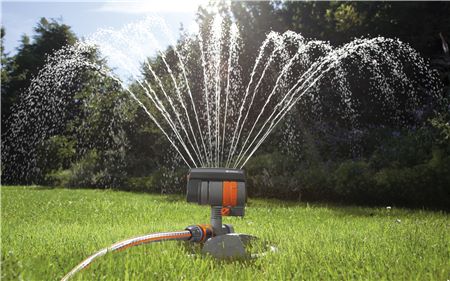

The use of sprinkler irrigation to water the lawn allows you to immediately cover a large area.
Drip irrigation - a special method of irrigation, in which water is regularly supplied to the roots of plants in small portions. Drip irrigation is widely used in greenhouse cultivation. For the first time, this method of irrigation was applied in Israel in the 1950s, where it became widespread due to its high efficiency in an arid climate. Due to the fact that only cultivated plants receive water, weeds do not receive moisture, moreover, this method of irrigation is more economical, since evaporation is avoided.
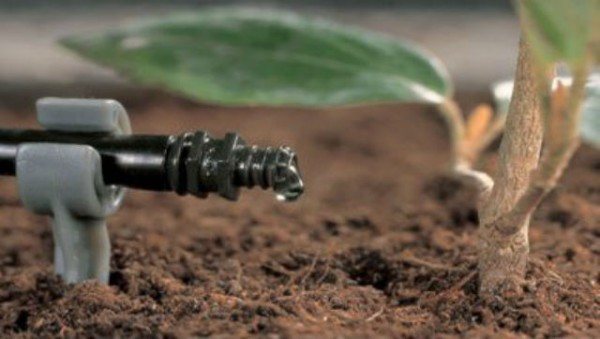

With drip irrigation, water is supplied in small portions for a long time.
Subsoil watering - in this case, the porous tubes are directly in the soil, and the water flows directly to the roots. With such a system, no heat is terrible, since there is practically no evaporation of water, but the cost of such structures will be higher than that of the previous two. In addition, it may require redevelopment of some places on the site.
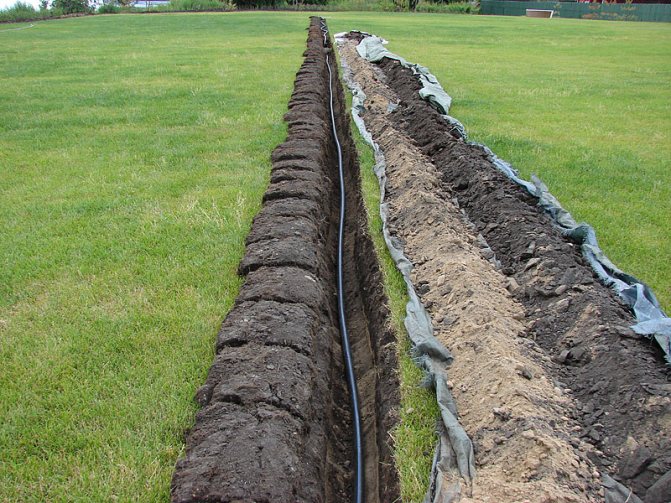

Laying a subsoil irrigation system under the lawn.
Watering potted plants... Many summer residents, in order to start the season earlier, are engaged in early forcing of plants for open ground. For this purpose, seedlings are grown at home on window sills and balconies. In addition, most people strive to create an atmosphere of coziness and comfort at home, and this is difficult to do without potted plants. In this case, you can use a variety of irrigation systems for potted plants.
Installing a water collection system
In order for water from the roof to enter the pipes, and from them to the parsing points in the house and outside it, it is necessary to think over a system in which the initial accumulation and subsequent wiring are provided. The main components of the system are storage and water supply.
Storage tank installation
A container for collecting water is needed to maintain the correct level of fluid in the system. As a rainwater storage tank, you can use any tank made of safe material: concrete, polyethylene, galvanized steel. The main property of the material for the production of a storage device is stability; it should not dissolve in water and change its chemical composition.
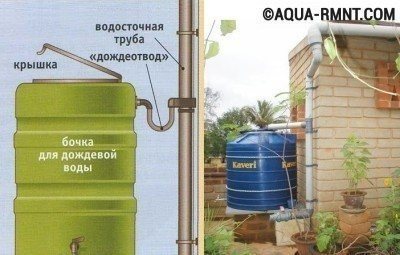

Installing a storage tank on the ground near the house has two advantages: you do not need to dig a special pit and you can use water for irrigation without using a pump
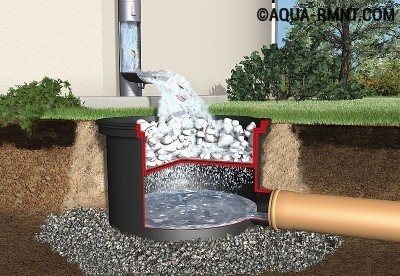

A buried rainwater collection tank is the best aesthetic option. In addition, the water in the cold earth will never "bloom"
There are several ways to mount the storage tank:
- install directly under the drainpipes on the ground;
- bury in the ground near the house;
- place in the basement or utility room.
The preferred option is to place the tank in the ground, as the coolness prevents the growth of microorganisms. But it is necessary to take into account two points: the level of soil freezing and the level of the location of groundwater. If all conditions suit you, you need to choose a container. It is better to stop at a large volume (2-3 thousand liters) so that there is always a supply.
The drive is installed according to the following algorithm:
- We pull out the foundation pit. Its dimensions should be slightly larger than the dimensions of the drive.
- At the bottom of the pit, we arrange a sand pillow 20 cm thick.
- We lower the water container.
- We fill up the voids on all sides of the container with sand.
- We install pipes and a pump.
- We close the neck of the tank with a lid.
When the cold comes, it is worth taking care of the safety of the system until the next season.The pump should be removed, cleaned and stored in a warm room, and the container lid should be tightly sealed and covered with a thick layer of sand on top, thereby protecting it from freezing.
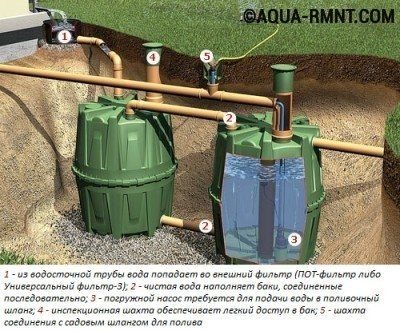

Instead of one large tank, several tanks can be placed in the ground, connected by pipes. Having thought over the water filtration system, it is possible to arrange additional purification
Plumbing device
In order for water to flow from the drain into the container, and from it into the house, it is necessary to lay a pipeline. Standard PVC outdoor products are great. From the roof, water enters the tank in a natural way, since it is lower, but the supply to the house is carried out forcibly, that is, with the help of a pump. If a centrifugal pump is used, then the place of its installation should be near the storage tank - as low as possible.
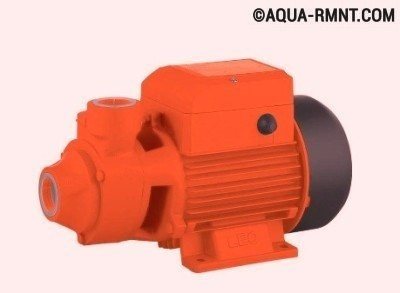

A sample of a household centrifugal pump is FORWARD FWP-550J. The immersion depth is 8 meters, the power is 550 W, the throughput is 2.4 cubic meters / hour, the maximum head is 40 meters. Price - 1800-1900 rubles
A small submersible pump will also work.
Attention! Installing the pump on the surface of the water ensures its cleanliness, since sediment accumulates at the bottom of the tank over time.
Auxiliary equipment for lifting and transporting water
We will not dwell on all the features of pumping equipment, since in terms of volume this topic deserves a separate article, we will try to briefly outline the main types of devices for transporting liquids in a summer cottage.
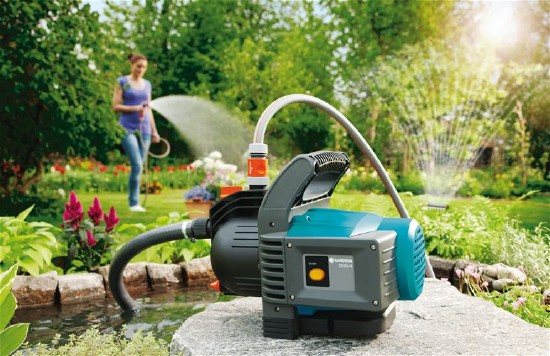

Surface pump - during work they are outside the liquid, they are often also called gardening. In private households, two types of surface pumps are most often used: centrifugal and vortex. The work of centrifugal devices is based on the rotation of the impellers, which create an area of rarefied pressure in the center of the pump housing, pushing water through the supply hose. Vortex pumps have a simpler design that also has wheels and can generate more outlet pressure.
Surface pumps are usually small and often have a handle on the case for easy transport, so they can be used in areas where there is no single source of water for irrigation. The suction depth of a surface pump usually does not exceed 8-9 m, so it is not suitable for deep wells or wells. But this device can pump water from a shallow spring, pond or barrel.
Surface pump: the intake hose is lowered into the water, and the supply goes to the watering point. A handle on the body makes it easy to carry the instrument.
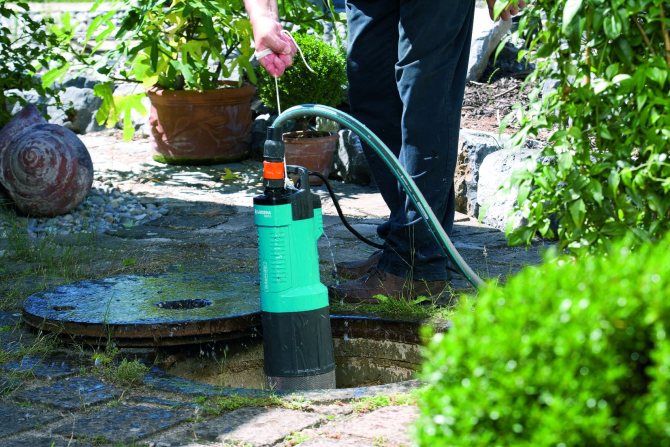

The submersible pump must be in water during operation. Suction is usually done through the holes in the bottom of the housing.
By the principle of operation, they also most often belong to centrifugal ones.
When using a submersible pump in a well, it is usually suspended by a rope or cable.
Submersible pumps are of different types depending on the functionality and lifting depth.
A submersible pump to cool all working elements requires the body to be in the water, therefore they often have a float with protection against "dry" running, which turns off the pump in the absence of a certain water level.
Downhole submersible pump designed for lifting water from great depths. It has a narrow diameter for penetration into small boreholes, usually the body is made of stainless steel. The downhole pump is installed for a long time, so its resource must be designed for a long service life.
A large number of impellers fit inside the borehole pump due to the elongated body.
Drainage pump - suitable for dehumidification of flooded premises and reservoirs.Most models have too little head for irrigation, but they can serve to fill tanks with water. Drainage pumps are divided into devices for pumping clean and dirty water.
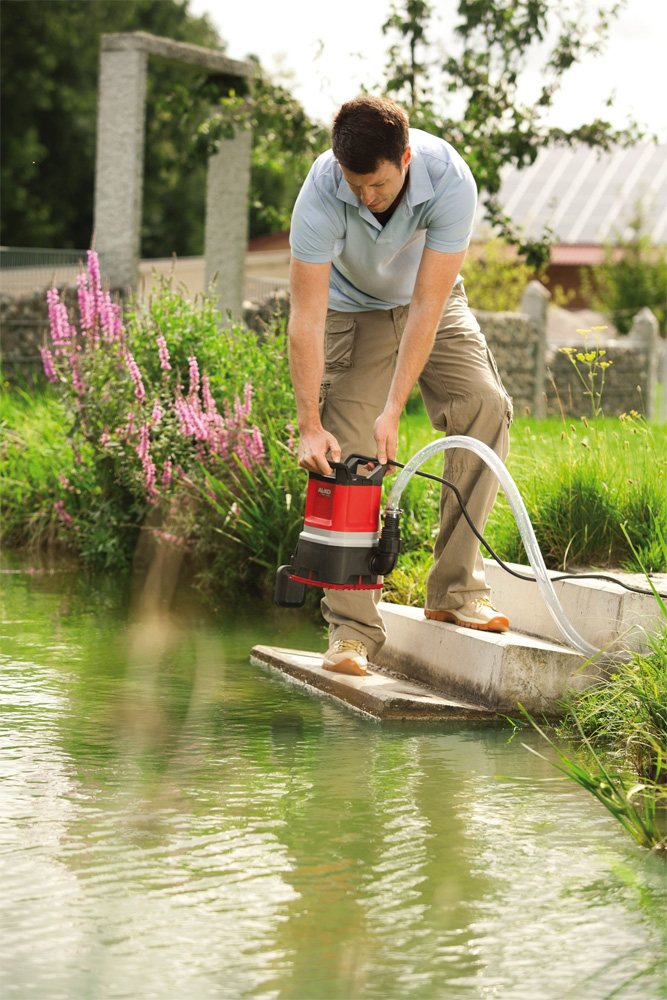

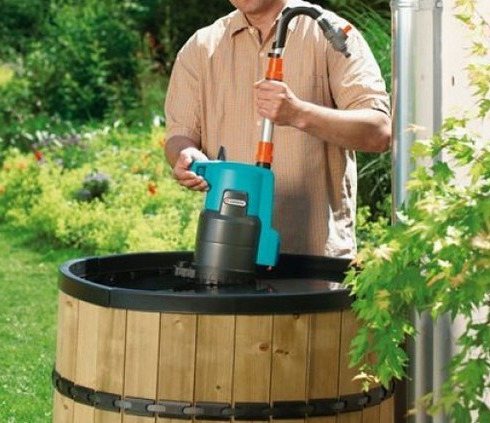

Drum pumps are a type of device that is suitable exclusively for supplying water from tanks. The main specialization of these pumps is irrigation.
Drum pumps often have special mountings that allow them to be installed on the edge of the drum. These devices are equally well suited for sprinkler and drip applications.
Water intake is carried out through the holes in the lower part of the case; the case itself is most often made of plastic, so as not to unnecessarily increase the weight of the device.
Drum pumps are often fitted with a bracket. In some case, the height of the mount can be changed to match the depth of the barrel.
Drum pumps are usually small and easy to operate. To prevent particles from the bottom of the drum from entering the pump, the device must be equipped with a protective filter. For protection against dry running, a float is most often used.
Most drainage pumps have a special stand at the base, thanks to which these pumps can be installed directly on the ground.
Pumping station - a universal device for water supply. Suitable not only for irrigation, but also for transporting water to other objects (taps, household appliances, etc.). The pumping station consists of a surface pump, a hydraulic accumulator (membrane tank). These devices can be equipped with dry-running protection, pressure switch and pre-filter.
The pump pumps water into the membrane tank, after opening the tap, water is supplied from the tank, and the resource of the pump itself and electricity are not consumed. Pumping stations will be useful when using autonomous irrigation systems. In addition, they can solve low head problems in the water supply system.
An example of a pumping station: the pump is located at the top, at the bottom is a hydraulic accumulator. The pre-filter is located on the left side of the pump.
Proper care of your equipment
To use rainwater in a home, it must be at least clean, so infrequent but mandatory system maintenance is required. For example, it is necessary to protect from debris and dust that accumulate on the roof, rainwater flowing into the collection tank. The first rain after a long drought serves as a kind of "sink" for the roof and gutters. The mud, together with the first streams of water, rushes from the roof into the gutters and pipes, so the water intake leading to the tank just needs to be disconnected for a while. In about an hour, clear water will flow - the pipe can be returned to its place.


Many modern drainage structures were initially equipped with devices for retaining large debris: nets with small cells, which are located along the gutters and at the junctions with pipes
Also, to purify water from coarse debris and leaves throughout the entire system, coarse filters are installed in the form of gratings and mesh baskets. The filters must be cleaned as they become clogged.
By installing a rainwater collection system in a country house, you will receive an additional source of water, and this is another step towards a comfortable life.
Collecting rainwater from the roof: the benefits of using
Living in a country house requires colossal housing maintenance costs - water supply, electricity, gas supply. A lot of water is spent on watering the garden and garden, and in order to save a little, smart owners use rainwater to water the beds.
Tap water with heavy metal impurities must be defended so that the elements settle to the bottom, and the water becomes a little cleaner.
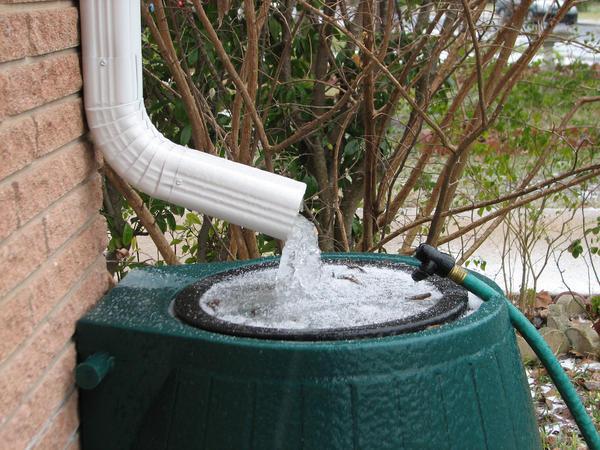

Using rainwater will significantly save water costs and is much cleaner, softer and safer.Rain and melt water can be used only for economic purposes - watering the garden, washing the car, washing. You can't drink rain water!
You can lay a pipeline that will deliver water to the area with beds.
The amount of water depends on the frequency of precipitation, if the summer is dry, then little water will be collected. And, conversely, during heavy rains, the container can overflow, so you need to install a special drain through which excess water will drain from the container.
see also
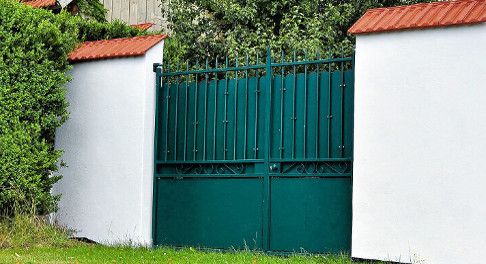

Arrangement | Editorial Fence of a Private House Fences and fences mark the boundaries of the plot. The hedges create attractive garden spots and landscapes. When planning fences, the illumination of the site, the location of buildings, driveways and gates are taken into account. Fences give the garden and private home a special atmosphere ...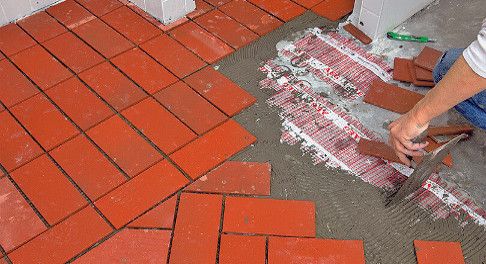

Arrangement | Editorial Article Electric "warm floor" in the bathroom
Replacing the old bathroom floor. The previous floor covering was removed and a new one was laid out of ceramic clinker tiles, with an electric heating system ...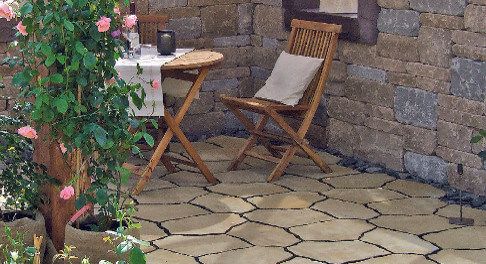

Arrangement | Editorial article Paving stones for paths
Paving garden terraces and paths with paving stones can breathe life into a trivial landscape. This overview shows the terraces and walkways as well as the potential for large format concrete parts ...
How to choose a container for rainwater: search criteria
The choice of container depends primarily on the purpose of using the water. The tanks can be used for storing drinking water or for rainwater.
Capacity selection criteria:
- The material from which it is made;
- Volume of the tank;
- The shape of the container.
A large container designed to accumulate and store rainwater is installed in the place where it is most needed. Usually it is near buildings - houses or greenhouses. You can install the reservoir in your garage or shed.
Collecting rainfall will significantly save water supply costs when used for garden irrigation. Very often the water supply is stopped at the dacha, so the presence of barrels of water for irrigation is simply necessary. The volume of the container can be different - from 100 to 5000 liters, the optimal amount of water for irrigation is about 3000 liters.
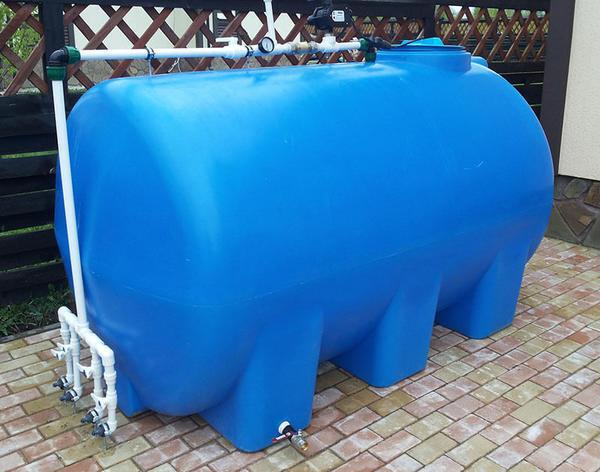

Important! The material from which the barrel is made must be free of lead and copper.
The strongest and most durable is considered to be stainless steel. Tanks made of stainless steel can be used to store both technical and drinking water. The shape of the containers is tank or rectangular.
Thick plastic is also used to make water containers. Barrels come in various shapes and colors, they do not deform, and their price is quite acceptable. Metal barrels are considered an economy option, they are inferior in quality to stainless containers.
It is undesirable to place containers in the open sun, microorganisms will begin to multiply in the water, the walls of the barrel will be covered with greenery.
Accumulator for water: types of containers
Accumulators for atmospheric precipitation can be both primitive capacity and complex design. For example, a battery assembled from several special plastic tanks connected by a drainage system.
Tanks can be divided into two types - above ground and underground. There are operating rules for each of them.
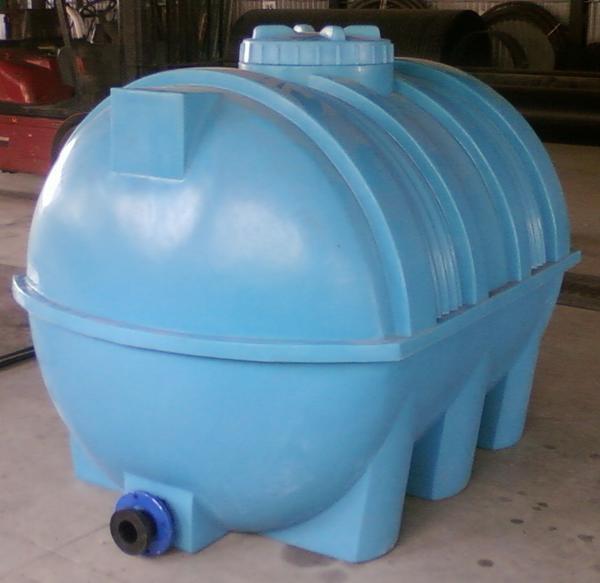

Underground tanks should be placed in the ground so that there is no more than 50 cm of soil above the tank. On the sides and bottom, it will be correct to cover it with sand, at least 20 cm thick. The tank must be sealed to prevent insects from flying in. If the water is standing for a long time, it must be poured either onto the site or into the sewer, which requires the installation of pumps and check valves so that the water from the sewer does not return to the tank.
Rainwater collection system: self-installation
The simplest rain collection system includes gutters, hoses, and water tanks.The water gutter is attached to the entire perimeter of the roof with special brackets. In the corner of the house, a drainpipe descends from the gutter, through which rainwater will flow directly into the barrel located directly under the pipe.
If the collectors will be located above ground level, it is enough to connect a hose to the container and lead it to its destination - a vegetable garden, greenhouse or garden. You can make a wiring of pipes leading to the toilet in the cistern. Under natural pressure, water will flow out of the barrel by itself.
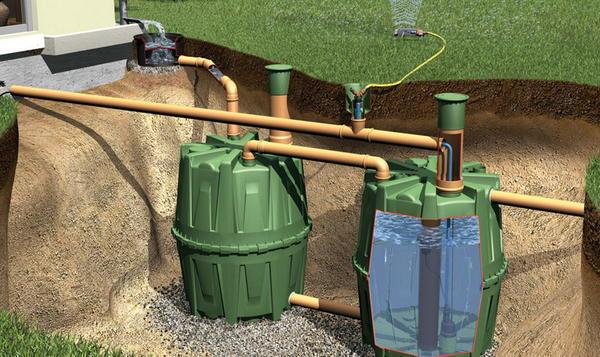

If the reservoir for collecting water is in the basement or buried in the ground, a pump will be needed to distribute the water throughout the area.
Water pipes and pump must be selected carefully. The device must be made of a material that does not corrode.
The collected water can be used for washing and showering, and it is advisable to filter it. The filter is a cleaning device that is installed at the entrance to the tank and at the exit from it, thus, the purified water can be used even for washing dishes.
Output
Organization of watering in the country is a complex work. It includes the choice of the optimal source of moisture, the method of delivery of water is selected depending on the source. For a barrel, a surface or barrel pump is suitable. For a well, a submersible pump corresponding to the depth is required. Water from a well can be pumped into a barrel or pond, and then from there it is supplied by gravity or with the help of a pump to the plants. The most autonomous system can be created if there is a water supply system or a pumping station.
After choosing the delivery method, it is necessary to rationally calculate the number of places (beds, flower beds, greenhouses, etc.) where water is required, and the distance to them. It is necessary to think over where the branching will go in different directions. Based on this, you need to select the required number of auxiliary equipment (fittings, droppers, sprinklers, etc.)
Harvesting rainwater for irrigation - tips, tricks
The availability of water in the country is an integral factor in a comfortable stay, as well as a full supply of plants with life-giving moisture. Harvesting rainwater for watering a vegetable garden or garden is a wise use of natural resources, even if you have an autonomous water supply system on your site. Rainwater is much softer than tap water, it is almost ideal for watering garden trees and vegetables.
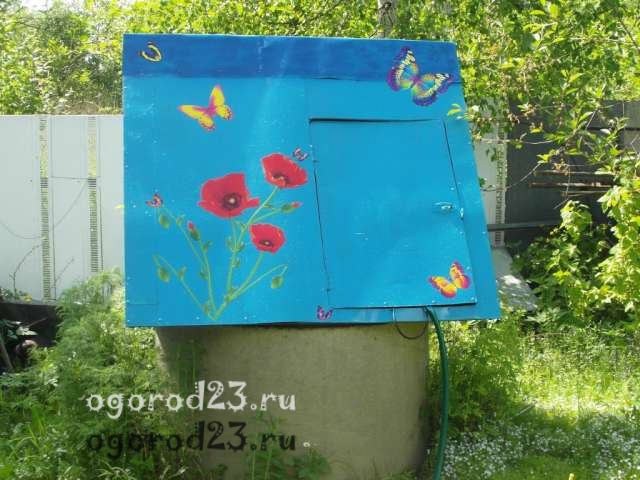

It can also be used to wash dishes, to drain the toilet, but it is not suitable for cooking. In addition to the amenities listed, collecting rainwater in your country house will help you save money for using resources from a centralized source. One factor is still worth considering - if your dacha is located near factories or near a large city, then the chemical composition of the precipitation may contain harmful impurities.
How to collect rainwater?
The easiest way to collect rainwater is with containers placed under the downpipes. In order for the tanks not to lose their qualities over time, they must be made of reliable materials (polyethylene, ceramics, concrete, fiberglass). There is usually a flap on top of such a tank to prevent foliage or other dirt from getting inside. If necessary, the damper is opened or closed manually. The volume of the tank can be different - this factor depends on the area of the site, your needs.
An old, time-tested option is a well for collecting rainwater. It is still successfully used by the villagers. For its arrangement, they dig a deep hole, the walls of which are reinforced, and then cemented with a thick layer of concrete. All required holes are taken into account in advance. You can also use ready-made concrete rings, which are installed on top of each other.In a modern design, wells are equipped with a cover, nets, grids for retaining debris, a submersible pump, sometimes a so-called emergency overflow is installed.
Well, photo:
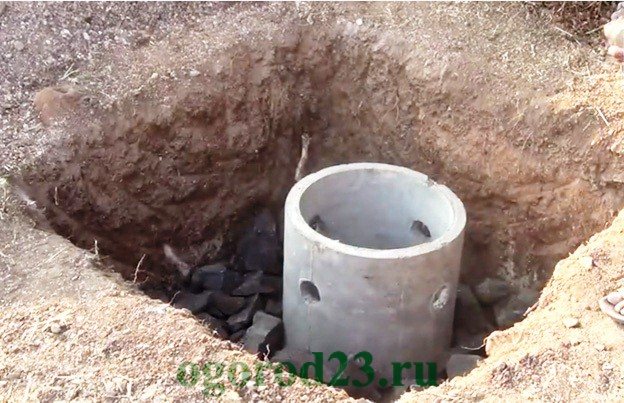

Pumping water
You can replace the hand pump-rocking chair by organizing the work of garden pumps, submersible or deep. Pumps for containers with rainwater come in handy when the use of a watering can is not provided, and the liquid from the container is distributed using a hose.
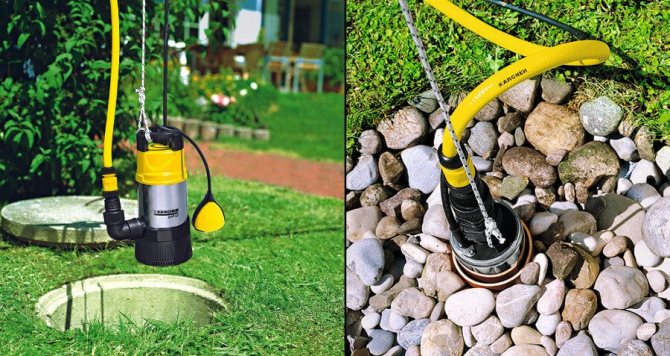

Submersible pumps are used to pump liquid from tanks and cisterns. With a noticeable lifting height in wells, deep pumps are used
Rainwater collection tanks
Rainwater harvesting is a rational way to provide additional water supply. Tanks for collecting natural sediments can be installed above the ground or buried (aboveground or underground reservoirs). The simplest example of such a system is an outdoor shower, the tank of which is located on the roof, where the water is heated by the sun throughout the day and becomes comfortable to use. A more advanced system of similar rainfall collection works in a similar way, but may additionally include cleaning filters.
Aboveground system, photo:
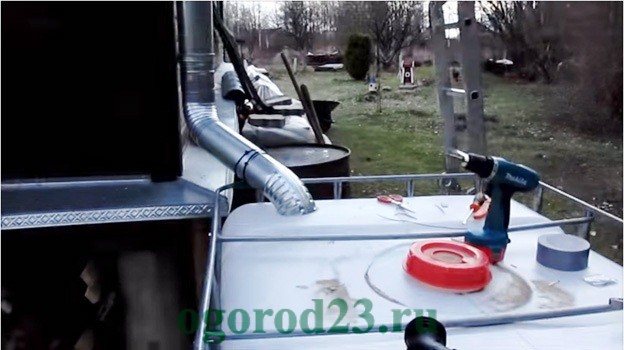

Aboveground tank is most often a wall-mounted version. Today, modern water storage tanks are made with an artistic approach, they are harmoniously combined with the architecture of the house, and look very attractive. Decorative containers for collecting rainwater can look like an antique column or amphora, so that at first glance you might not guess that this is actually a reservoir. Water comes inside it from the gutters, and the standard volume is 300-2000 liters.
Photo of a wall-mounted tank:
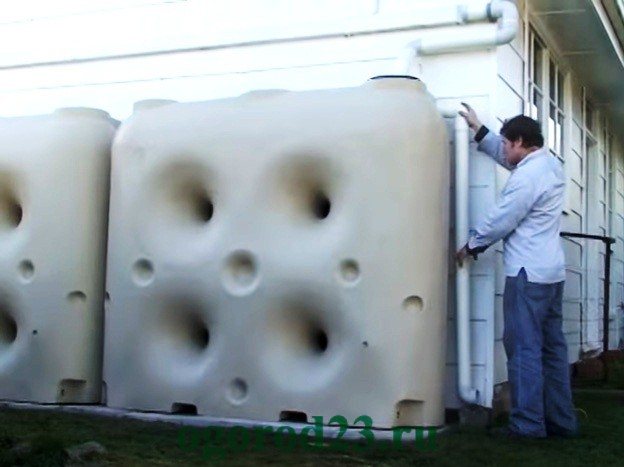

The amount of water collected depends significantly on the roof modification, type of roofing. If the roof has a hip or pitched structure, then its angle of inclination will contribute to a better convergence of water to the gutters, drains. In addition, less dirt accumulates on such roofs, respectively, the water will be cleaner. The type of roof is also important, for example, less dust adheres to ordinary tiles. Some types of roofing can emit chemicals that, along with precipitation, enter the rainwater collection tank - all of these factors must be considered. On flat roofs with a minimum slope, water stays longer (more dirt collects), so the additional purchase of a filter for the storage tank will be relevant.
The quality of the water also depends on the material of the gutters, gutters (metal products will increase the level of iron in the water), so that plastic counterparts will become more appropriate. If the roof of your house is covered with asbestos slate, exclusive copper tiles or has lead parts, then it is better to abandon the idea of collecting rainfall altogether. This rule also applies to gutters, gutters. But clay tiles, galvanizing, various types of plastic, bituminous roofing tiles - on the contrary, are quite appropriate, even able to maintain the purity of rainwater.
In general, it is desirable that the tanks are made of dense plastic (opaque polypropylene) - this is the best solution, because over time the metal will not corrode. Simply put, the roof water collection system is an aboveground container located at the outlet of the downpipe. There is a tap on this tank, when it is opened, water comes out, sometimes a water pump is used. The tank itself will be more correctly placed in a shaded place so that the direct rays of the sun do not provoke the growth of algae and microorganisms inside. If you are installing a storage tank, do not forget about the possible excess of water.To prevent this from happening, an outlet is equipped in the upper compartment of the container, which is sent to the sewer or a specially equipped groove.
There is another option for arranging this system, where underground containers for collecting rainwater are required. Such a tank will cost the owner a little more expensive than the above-ground analogue; in this case, a water pump will be required unambiguously, but at the same time additional advantages will appear. A tank buried under the ground or installed in the basement will not take up space in the yard, there may be several tanks themselves (small ones are combined with each other). If you have a small plot with a house, then this option will suit you best. An important condition for the installation of an underground drainage tank is a low level of occurrence of the aquifer. The fill layer above the tank should also not be more than 50 cm. Tanks for the underground catchment should be made of appropriate materials (as well as aboveground ones).
Installation of an underground reservoir, photo:


Choosing the right roof for the system
Not every building or home is suitable for collecting water, as the configuration of the roof and the material of the roof covering affect the quality of the liquid. It is recommended to immediately exclude flat roofs for two reasons:
- rainwater runoff is devoid of natural drainage;
water stagnates on the roof surface in the form of puddles, which are a breeding ground for bacteria.
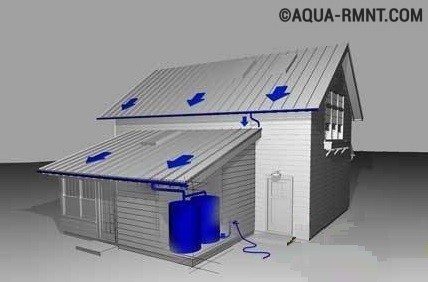

Any sloping roof can be equipped with a water collection system using a structure assembled from gutters, downpipes, connectors and fasteners
Thus, the rainwater collection system is installed on buildings that have a pitched or gable roof with a certain slope, the best option is from 10 ° or more. On a steep roof, water flows much faster, therefore, it does not have time to get dirty.
Attention! Some roofing materials contain substances that are harmful to human health - copper, lead, asbestos. Do not collect water from roofs covered with asbestos slate or copper shingles. Gutters and gutters containing copper or lead are also excluded.
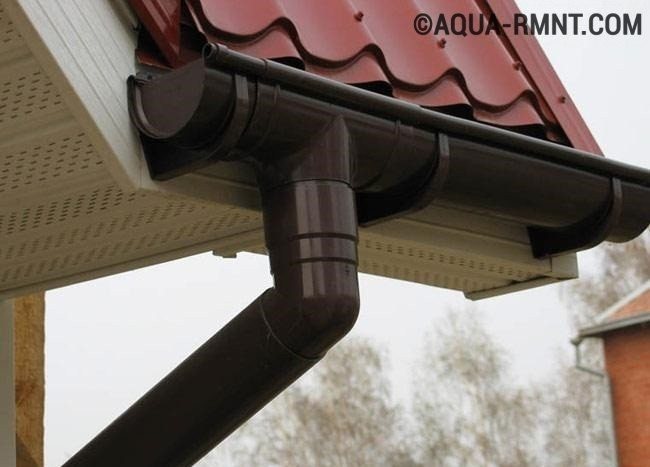

Modern modular plastic drainage structures are absolutely safe, moreover, they not only serve to collect water, but also are a decorative element of the building
Clay tiles, galvanized metal and modified plastic, from which modern drainage structures are made, will keep the rainwater clean. Bituminous coatings are also relatively safe.
Harvesting rainwater - real savings in effort, money and time
Adding an article to a new collection
Rainwater is a renewable resource that many gardeners simply ignore. And completely in vain.
In this unpredictable summer, when the weather now and then interferes with sunbathing, but still sometimes pleases us with warm days, you can get no less pleasure by building a comfortable and economical country shower. You don't have to spend your last savings to do this. An old barrel or container can become a water reservoir, and, as a rule, there is no need to fill it, warm summer rains will do it for you. How else you can use rainwater, and how to properly collect it, read our today's material.
What you can use rainwater for
Water is not the cheapest pleasure. In a dry summer, gardeners have to spend an incredible amount of liters so that the seedlings in the greenhouse do not wither, the greens in the beds do not dry out, and the cucumbers do not taste bitter. The use of rainwater is not just a tribute to the trend towards sustainability in everything. First of all, it is convenient and economical. After all, rainwater does not need to be carried in buckets from a well. And unlike Prince Lemon from the tale of Cipollino, in our latitudes, ordinary people are still not asking to pay for the precipitation. And the applications of the water falling from the sky are many, and first of all - in the beds and in greenhouses.
You can water the plants in the traditional way, but it is much more practical to build a drip irrigation system, which can significantly reduce water consumption, reduce labor costs, save time, and, if necessary, organize root feeding.
If you install a reservoir for collecting rainwater about 1.5-2 m above ground level, then you will not have to spend money on a pump that supplies water to plants, as well as on electricity to operate it.
In addition, rainwater can be used for washing, flushing the toilet, cleaning garden paths or washing your car. With proper collection and a normal environmental situation in the region, the water remains soft and saves detergents.
However, rainwater is not suitable for drinking, cooking or washing dishes.
We teach independence - autonomous operation of irrigation systems
In addition to the required elements, such as hoses, drippers and splitters, irrigation systems can be equipped with additional devices that expand their functionality. To automate the irrigation process, a number of devices are used that help make the irrigation system autonomous. Many manufacturers supply them complete with drip irrigation systems, for some you will have to purchase them separately.
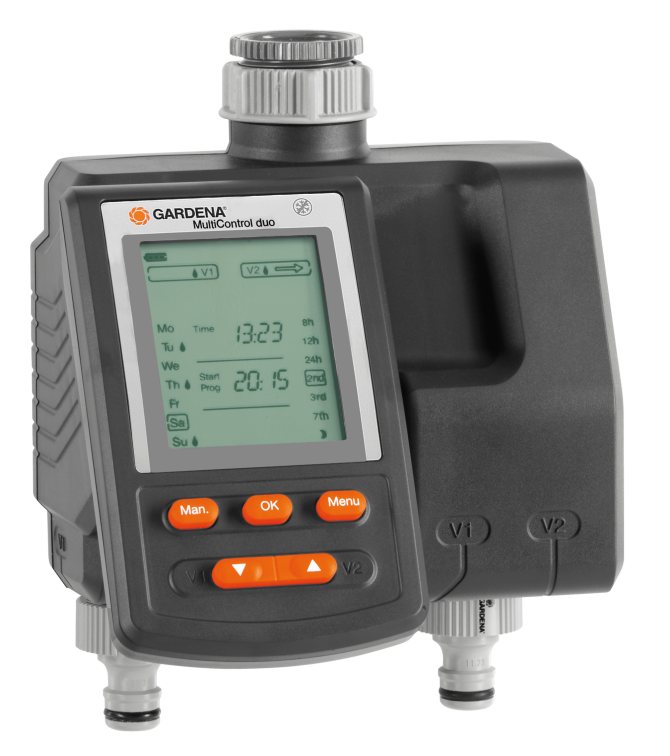

An example of a timer for irrigation systems: at the top - a threaded fitting for connecting to a tap, at the bottom - two fittings for connecting two hoses.
Semi-automatic timer allows you to set the duration of irrigation and automatically turn off the water supply, but in order to turn on the irrigation, the presence of a person is required.
Automatic timer can water using different programs. For example, irrigation of several points in different cycles. The timer can be operated from the mains or from batteries, there are also models that run on solar panels.
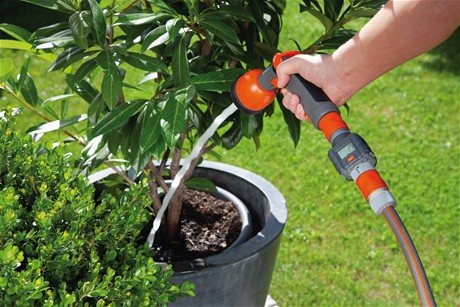

Water distributor works in conjunction with a timer, with its help you can organize watering in different places. The distributor helps summer residents in the event that the pressure is not enough for the simultaneous operation of different devices, watering is carried out sequentially.
Water meter allows you to easily determine the dose of moisture consumption. If the reserves of liquid in the area are limited, then this device will help to use it most economically.
Humidity sensor - accessory for efficient water consumption. It sticks into the garden bed and measures the soil moisture level. When the amount of moisture in the soil falls below the established rate, watering is turned on. Such a device is convenient if, during the absence of the owners in the country, it rained, and the irrigation program was designed for dry weather, in this case, watering will not be carried out until the soil is dry.
Some water meters can be installed anywhere in the system.
Auxiliary equipment for irrigation
D
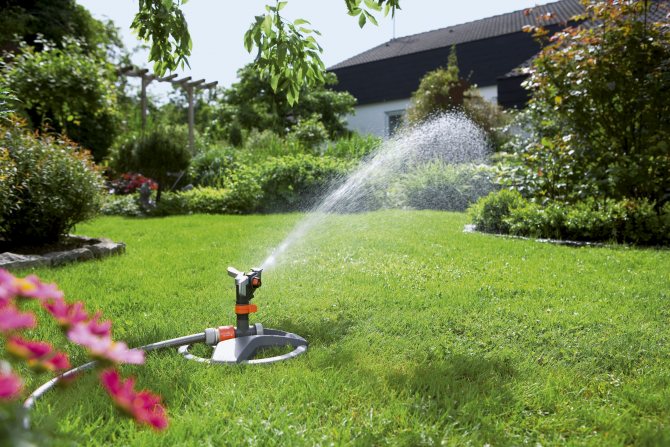

For irrigation of large areas (especially lawns), sprinklers are often used. We have already written about sprinkling as a type of irrigation. Now it's time to deal with the special devices that are used for this irrigation method. The pressure of the water causes the movable element of the device to rotate and spray water over a large area.
Impulse Sprinkler - the movable spray of these devices, under the influence of the pressure of water, rotates around the circumference. On impulse-type sprinklers, it is usually provided for a change in the irrigation area: from a circle to a sector. Rocking the sprayer prevents puddles from forming.
The jet density of the impulse sprinkler is also subject to adjustment.
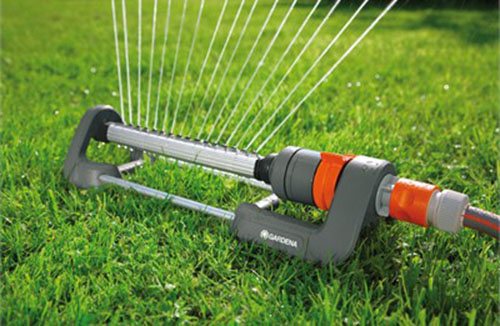

Rotating Wing Sprinkler (Oscillating) irrigates a rectangular area, the nozzles are on a rotating arch or cylinder. On most models, you can select watering areas (half rectangle, center rectangle, whole rectangle).
Revolving sprinkler consists of several turrets that irrigate a rectangle.
Unlike an oscillating system, such a sprinkler can irrigate areas of different lengths and widths.
The most common design for an oscillating sprinkler.
You can assess whether there is enough moisture in the soil using a sampler. This is a T-shaped tool that is stuck into the soil after watering to a depth of 200 mm, after which the amount of moisture in the lower layers of the soil is estimated. If the ground is darkened by water, then watering can be stopped. There are also similar electronic indicators.
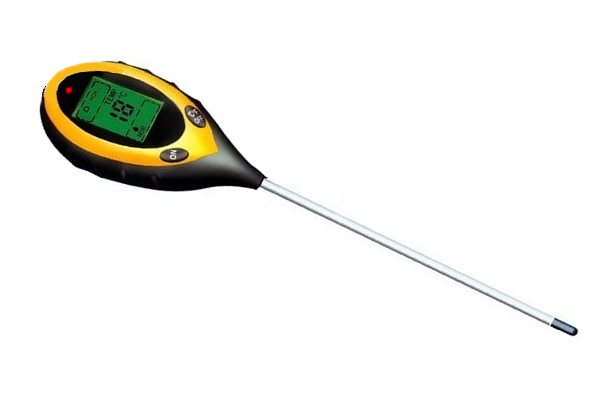

Electronic device for determining soil moisture.
Hoses - the circulatory system of irrigation at the summer cottage. Most hoses are made of PVC or rubber. Most manufacturers produce hoses in standard diameters. The most common are 1/2 and 3/4 inches, 5/8 models are rare. It is important to remember that the weaker the head, the smaller the diameter should be. Also an important characteristic for a hose is its length, the longer the hose, the less pressure at the outlet.
PVC hoses reliable and lightweight are obtained. There are two-layer and three-layer hoses. PVC retains its shape when heated and is able to withstand temperatures as low as -25 degrees, but in the cold the hose loses its flexibility. The UV mark indicates protection against ultraviolet radiation, which is very important, since when pr
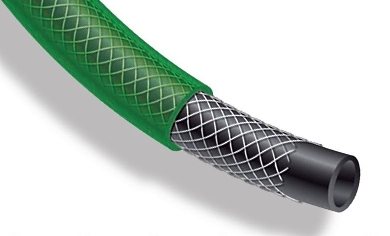

When the sun shines through the coating, blue-green algae begins to develop inside, which can lead to overgrowth of the hose.
Modern rubber hoses characterized by high reliability and durability, although the weight of such products will be higher than that of analogs made of PVC
Hose reinforcement - a technology in which reinforcing braid threads are placed between the layers, the weaving form can be spiral or mesh. The main purpose of the braid is to prevent kinking, kinking and kinking of the hose. The reinforcement also counteracts the rotating effect at high pressure.
The braid for double layer hoses is usually located between the outer and inner layers.
Oozing hose - often used for drip irrigation. The hose is made of a porous material through which water seeps. Oozing hoses are often used in underground irrigation systems.
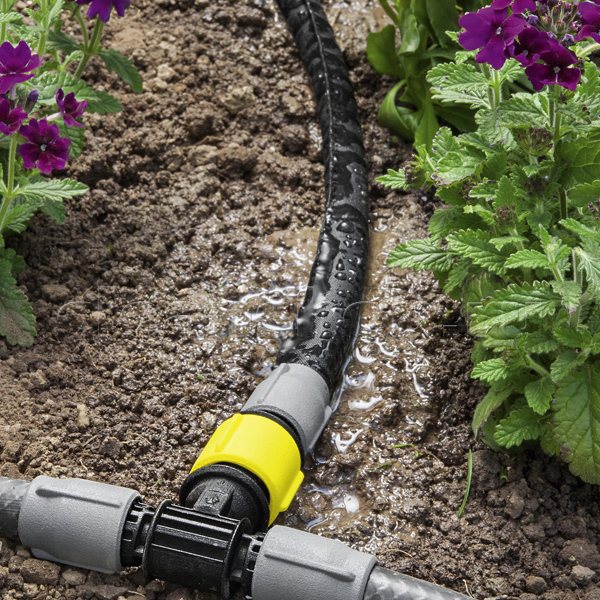

An example of connecting a trickling hose: using a splitter with a fitting, the hose is diverted from the main line to the garden where drip irrigation is required.
Perforated hose equipped with special holes through which water beats in thin jets. The effect is like a sprinkler, only the irrigation area can be set more optionally.
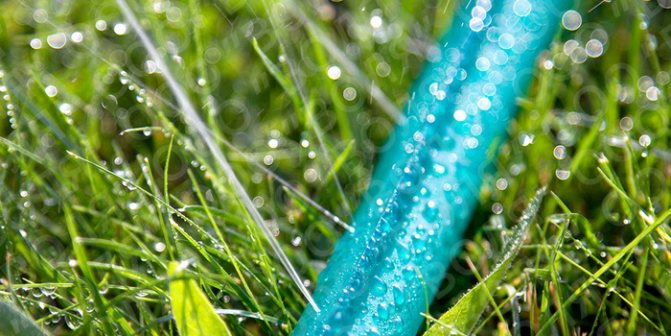

The perforated hose is a good alternative to sprinklers when watering your lawn.
Fitting - elements that allow you to combine disparate hoses into a single irrigation system. All fittings can be conventionally divided into three groups. The first ones connect the hose to the tap, the type of connection must be selected depending on the tap. The connection can be made through a thread, using a union or a clamp.
Connection with a clamp is justified if the hose lies in one place for a whole season, in other cases it is better to use a fitting-union connection.
The aquastop fitting is usually installed at the end of the hose.
Connecting fittings include a variety of adapters, splitters, valves and couplings. Splitters allow you to make the water supply system rational, instead of one long hose, several short ones are used, and the direction of the water is selected by turning on a certain tap. At the end of the hose, an aquastop fitting is usually installed.
The aquastop fitting can close the water valve when the hose with fitting is disconnected from the sprinkler fitting or spray nozzle. In this case, you do not need to go to the tap to shut off the water supply.
Connection option, when the union is screwed to the tap, and the hose is connected to it using a fitting.
Hose trolleys and reels are used for transportation and storage of the hose reel. The trolleys are designed for a specific hose length and diameter. Some advanced models even come with an automatic rolling mechanism. Reels without wheels can be attached to the wall of the house.
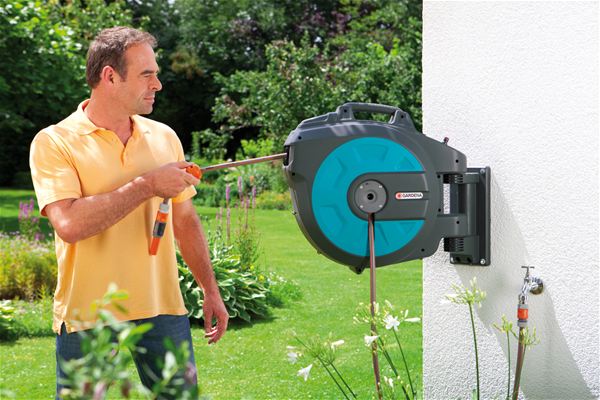

The reel can be installed on the wall, then the hose will not roll underfoot and deteriorate.

